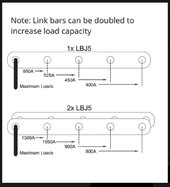offgrid-curious
New Member
My point is that everything has resistance. The reason you want to minimize the number of connections in your system is because every time you are connecting something together you are adding more resistance to the system. The reason you might use 2/0 gauge copper wire instead of 20 gauge copper wire to connect your battery to your inverter is because the resistance of the 20 gauge wire is too high. It's also why we are using copper wires instead of say, rubber wires; because they have lower resistance.I am not saying you're wrong, but it doesn't make sense to me that 2 busbars clamped together create resistance, but individual copper strands which are not clamped together don't.
A similar example is the JK-BMS ships with 2 connect wires instead of 1 for its connections, presumably to lower costs because 2 thinner wires is cheaper than 1 thick one with the same cross-sectional area. Would you advise JK to use only a single thinner wire, because adding a 2nd creates resistance? Again, not saying you're wrong, I just genuinely don't understand your logic.
I think that with the JK BMS there are two wires instead not just because it's cheaper, but it also allows more flexibility. They also use silicon wires that can withstand higher temperatures, so they handle more current. There's nothing wrong with two wires on the JK BMS, because like you said it works out to the same cross-sectional area of an equivalent single wire. You can also terminate both of the wires into a single lug instead of using two separate lugs.




